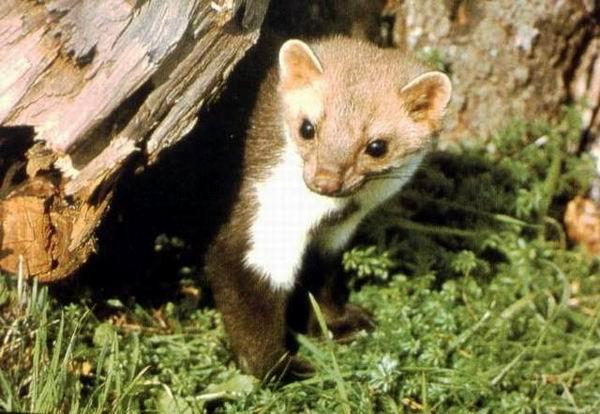Recent DNA research has shown that the genus Martes is in fact polyphyletic, placing Martes pennanti and Martes americana outside the genus and allying it with Eira and Gulo, to form a new New World clade. The genus first evolved up to seven million years ago, during the Pliocene.
American Marten Martes americana
Newfoundland Pine Marten Martes americana atrata
Yellow-throated Marten Martes flavigula
Beech Marten Martes foina
Nilgiri Marten Martes gwatkinsii
Pine Marten Martes martes
Japanese Marten Martes melampus
Fisher Martes pennanti
Sable Martes zibellina
Martens are slender, agile animals, adapted to living in taigas, and are found in coniferous and northern deciduous forests across the northern hemisphere. They have bushy tails, and large paws with partially retractible claws. The fur varies from yellowish to dark brown, depending on the species, and, in many cases, is valued by fur trappers.
Martens are omnivorous animals related to wolverines, skunks, minks, badgers, ferrets and weasels. Their diet consists of squirrels, mice, rabbits, birds, fish, insects, and eggs, and they will also eat fruit and nuts when these are available.
Martens are solitary animals, meeting only to breed in late spring or early summer. Litters of up to five blind and nearly hairless kits are born in early Spring. They are weaned after around two months, and leave the mother to fend for themselves at about three to four months of age.
In the Middle Ages, marten pelts were highly valued goods used as a form of payment in Slavonia, the Croatian Littoral and Dalmatia. The Croatian word for marten, kuna, is the name of the modern Croatian currency. A marten is depicted on the obverse of the 1, 2 and 5 kuna coins, minted since 1993, and on the reverse of the 25 kuna commemorative coins.
The Finnish communications company Nokia derives its name, via the river Nokianvirta, from a type of marten locally known as the nokia.
